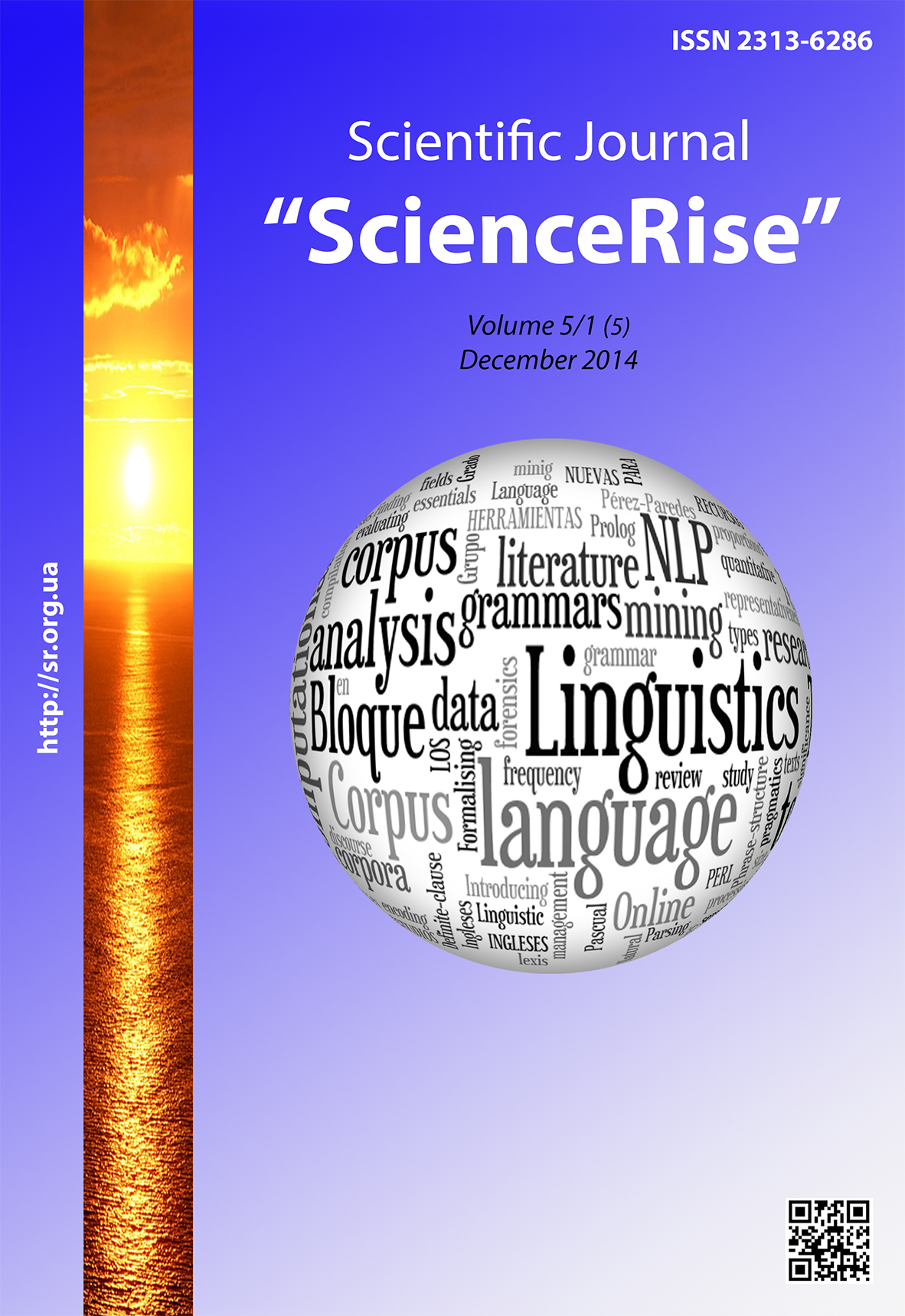Hydrogeochemical characteristics of groundwater of the upper Carboniferous-lower permian aquifer system of the dnipro-donets depression South-Eastern part
DOI:
https://doi.org/10.15587/2313-8416.2014.30737Keywords:
salt dome structures, groundwater, brine, terrigenious formation, rock salt formationAbstract
Ground water within the researched area is characterized by considerable variability of salinity, macro-and microcomponents content. . To determine the mechanisms of formation of hydrochemical "anomalies" has been created the isoline maps of salinity, Na/Cl coefficient and other hydrological characteristics of groundwater. Based on analysis of lithological and paleohydrological data maps the conditions of groundwater chemical composition in area and in the context has been determined as different.
References
Ayzenverg, D. Ye., Berchenko, O. I., Brazhnikova, N.E. (1988). Geologiya i neftegazonosnost Dneprovsko-Donetskoy vpadiny [Geology and oil and gas potential of the Dnieper-Donets basin]. Naukova dumka, Kyiv, Ukraine, 148.
Stadnichenko, S. M. (2010). Osoblivosts katagenezu v osadovih baseynah, scho mistyat galogenni formatsyi [Features of katagenesis in sedimentary basins containing halogen formations]. Collection of scientific works of Institute of geological science NAS of Ukraine, Kyiv, 112–121.
Gutsalo, L. K., Krivoshiya, V. A. (1969). Obshchiye regionalnye geokhimicheskiye osobennosti podzemnykh vod Dneprovsko-Donetskoy vpadiny [General regional geochemical characteristics of groundwater of Dnieper-Donets basin]. Geology and Geochemistry of Combustible Minerals, Kyiv, Ukraine, 75–87.
Babinets, A. E. (1961). Podzemnye vody yugo-zapada Russkoy platformy [Groundwater of the southwest Russian Platform]. Naukova dumka, Kyiv, Ukraine, 377.
Kolody, V. V. (1983). Podzemnye vody neftegazonosnykh provintsy i ikh rol v migratsii i akumulyatsii nefti (na primere Yuga Sovetskogo Soyuza) [Groundwater potential provinces and their role in oil migration and accumulation (on the example of the South Soviet Union)]. Naukova dumka, Kyiv, Ukraine, 248.
Shvartsev, S. L. (1997). Geologicheskaya sistema voda-poroda [Geological system water-rock]. Bulletin of the Russian Academy of Sciences, Moskov, Russia, 67 (6), 518–524.
Alekseyev, V. A, Ryzhenko, B. N., Shvartsev, S .L. et al. (2005). Geologicheskaya evolyutsiya i samoorganizatsiya sistemy voda-poroda. T.1. Sistema voda-poroda v zemnoy kore: vzaimodeystviye, kinetika, ravnovesiye, modelirovaniye [Geological evolution and formation of water-rock system. V.1. The system of water-rock in the crust: interaction, kinetics, equilibrium modeling]. Russian Academy of Sciences, Novosibirsk, Russia, 244.
Gavrieli, I., Yechieli, Y., Halicz, L. (2001). The sulfur system in anoxic subsurface brines and its implication in brine evolutionary pathways: the Ca-Cl brines in the Dead Sea area. Earth and Planetary Science Letters, 186 (2), 199–213. doi: 10.1016/s0012-821x(01)00247-3
Bein, A. Dutton, A. (1993). Origin, distribution and movement of brine in the Permian Basin (USA) – A model for displacement of connate brine. Goelogical Society of American Bulletin, 105 (6), 695–707. doi: 10.1130/0016-7606(1993)105<0695:odamob>2.3.co;2
Stueber, A. M., Walter, L. M. (1991). Origin and chemical evlution of formation waters from Sillurian-Devonian strata in the Illinois basin, USA. Geochimica et cosmochimica acta, 55 (1), 309–323. doi: 10.1016/0016-7037(91)90420-a
Yapaskurt, O. V. (2005). Aspekty teorii postsedimentatsionnogo litogeneza [Aspects of the postsedimentary lithogenesis theory]. Litosfera, Moskov, Russia, 3, 3–30.
Spencer, R. J. (1987). Origin of Ca_Cl brines in Devonian formations, western Canada sedimentary basin. Original Research Article. Applied Geochemistry, 2 (4), 373–384. doi: 10.1016/0883-2927(87)90022-9
Shestopalov, V. M., Negoda, G. M., Moiseeva, N. P. (2009). Formuvannya mineralnih vod Ukrayini [Formation of mineral waters of Ukraine]. Naukova dumka, Kyiv, Ukraine, 312.
Downloads
Published
Issue
Section
License
Copyright (c) 2014 Світлана Миколаївна Стадніченко, Наталья Петрівна Сюмар

This work is licensed under a Creative Commons Attribution 4.0 International License.
Our journal abides by the Creative Commons CC BY copyright rights and permissions for open access journals.
Authors, who are published in this journal, agree to the following conditions:
1. The authors reserve the right to authorship of the work and pass the first publication right of this work to the journal under the terms of a Creative Commons CC BY, which allows others to freely distribute the published research with the obligatory reference to the authors of the original work and the first publication of the work in this journal.
2. The authors have the right to conclude separate supplement agreements that relate to non-exclusive work distribution in the form in which it has been published by the journal (for example, to upload the work to the online storage of the journal or publish it as part of a monograph), provided that the reference to the first publication of the work in this journal is included.

